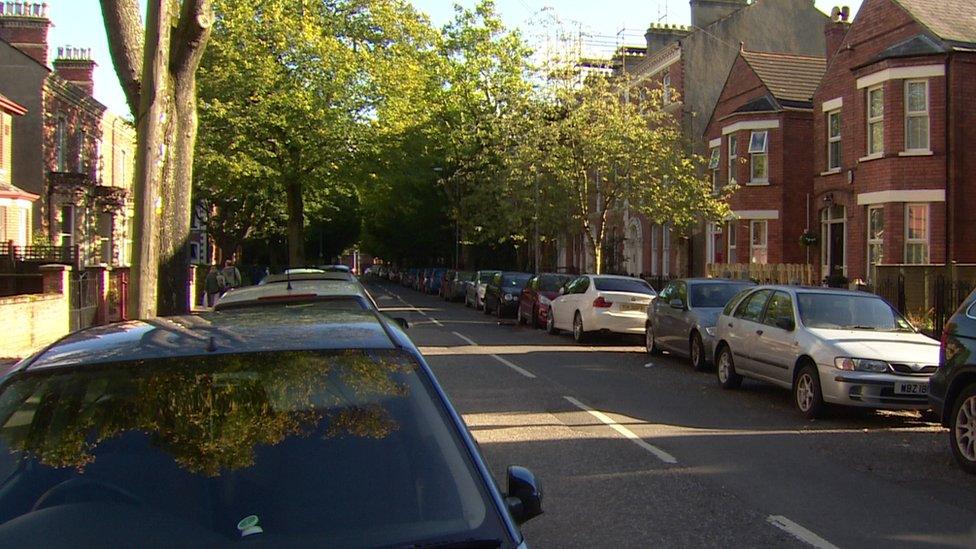Holyland: How do you solve Belfast's perennial problem area?
- Published
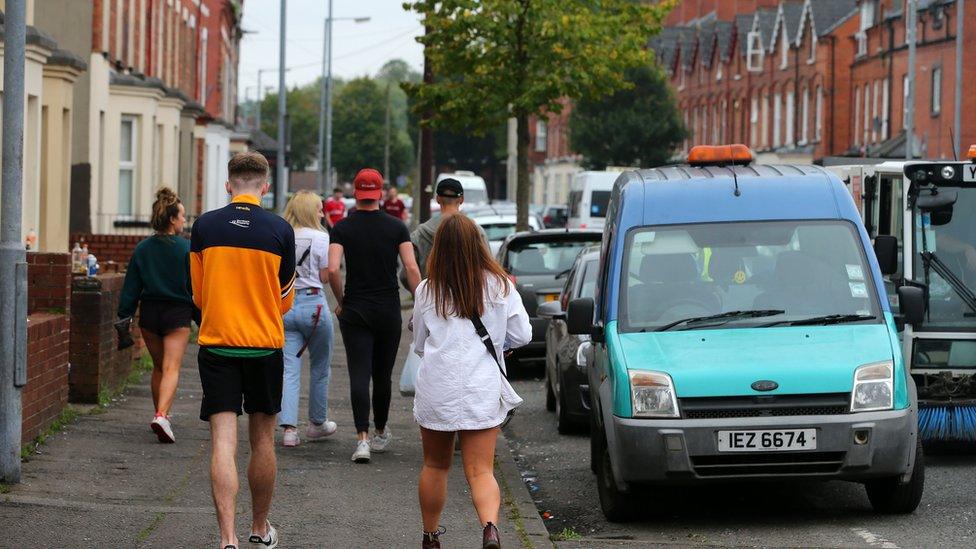
Residents, students and landlords have a contested view of south Belfast's Holyland area
When Brid Ruddy first moved to the Holyland area of Belfast in the mid-1970s, it was to escape the sectarian confines around the Oldpark Road in the north of the city.
"I moved here around the university where there was diversity - a very bohemian area," she said.
"It was multi-ethnic, multi-class, multi-religious, we were one of the few areas that was really mixed."
In the years since then, Ms Ruddy, from the local College Park Avenue Residents' Association, has moved away and moved back - and the reputation of the area has changed dramatically.
The square kilometre area on the west bank of the River Lagan, with its streets of affordable terraced accommodation, is synonymous with the Belfast student experience, as well as spates of anti-social behaviour.
Year after year, large scale street parties around St Patrick's Day and the start of the academic year inevitably draw condemnation and generate friction between residents and students - as well as often those who travel into the area to party.
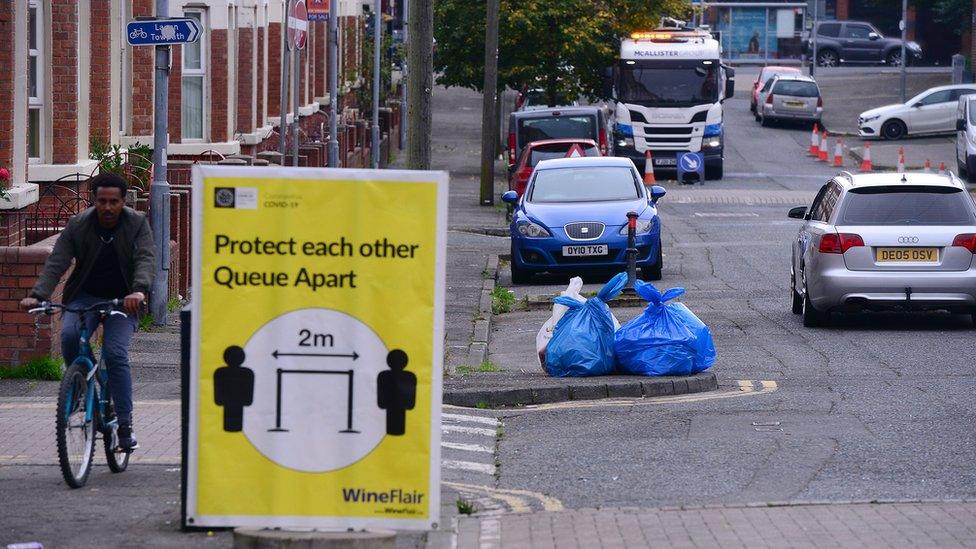
Students have been reminded to follow coronavirus regulations by their universities
In 2020, the stakes for the returning student population are considerably higher due to the potential for the spread of coronavirus.
In the weekend before the first week of term, more than 100 Covid notices, or fines breaches of Covid-19 regulations, were issued - although, by Friday, police noted an "improvement in behaviour" from students, with no fines issued the night before.
Queen's University, the university closest to the area, has also suspended 27 students for up to two weeks over breaches.
But just what are the issues in the Holyland? BBC News NI spoke to students, local residents and landlords on what's going on and what should be done.
Where does the issue lie?
It's no surprise that Ms Ruddy, from the residents' association, and a representative from the Landlord's Association of Northern Ireland had different takes on where exactly fault lies.
A spokesman for the Landlord's Association said the problem is with residents who are determined to stay.
"Going back decades, the area was full of rooming houses, with tradesmen living in a house with a landlady. It was never the situation that there were lots of families with 2.2 children, as the residents can sometimes suggest," he said.
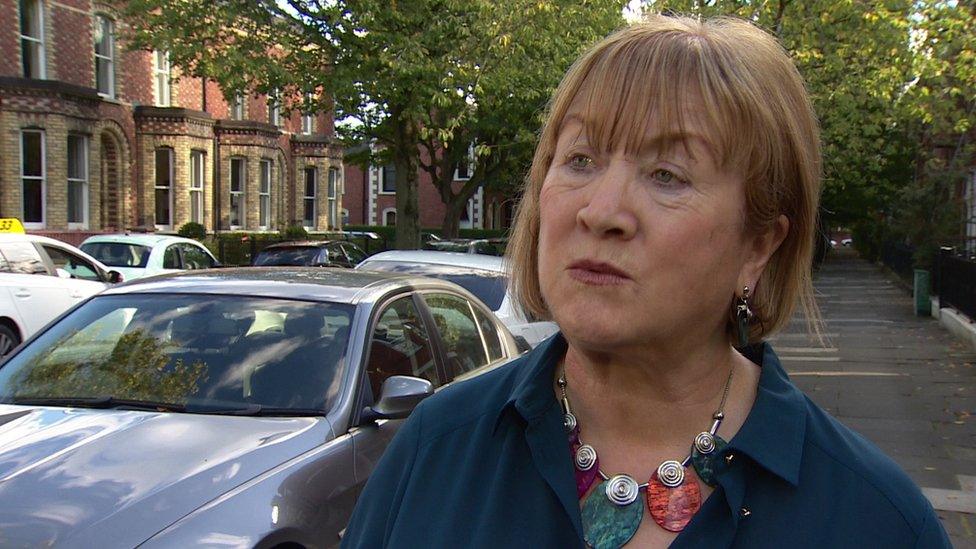
Brid Ruddy has lived in the Holyland area since returning in the 1990s and previously lived in the area as a student
"The problem is that these houses are not particularly family friendly, there are no amenity spaces, no gardens... they are student-type dwellings.
"There are the handful of residents that have remained after the great sea of students washed in over them. They refused to move and now, like King Canute, they sit there trying to hold the tide back."
Ms Ruddy said that "landlords like to say this would become a student village, but it would be a student ghetto".
"My response is they are not going to force me out - I am not moving out, they are not moving anybody out."
Ms Ruddy said in the 30 years since she returned to the area, the student population had grown exponentially, in part due to former Prime Minister Tony Blair's policy of 50% of young people attending university.
"There was so much in the area that was different from the norm in Belfast at the time, and there is no way we want to go to being a ghetto. This is all part of what you could call 'studentification'."
She said the suggestion by landlords that residents should move out goes against government policy of integrating areas.
Ms Ruddy added that an increase in social housing could have a positive impact in the area and welcomed interest by housing associations.
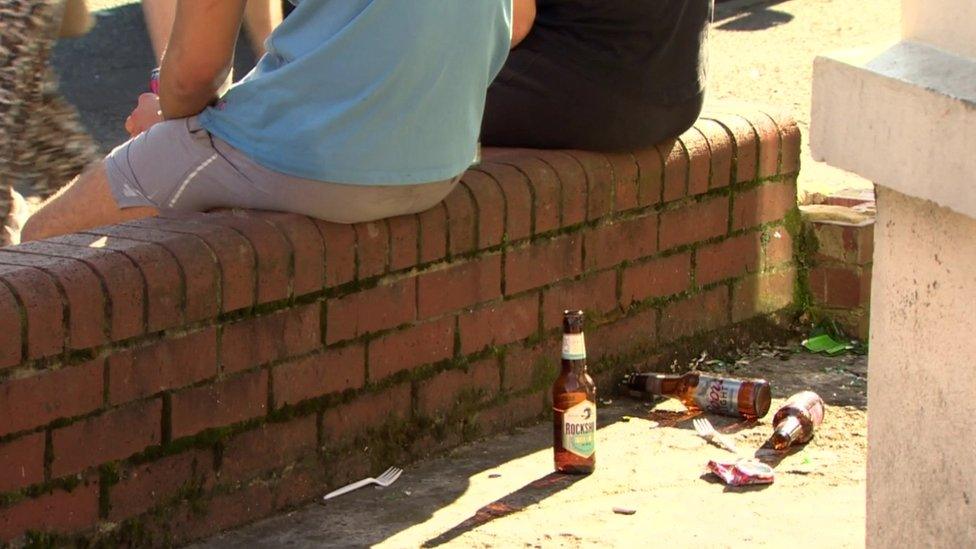
The Holyland area of Belfast is a short distance from Queen's University
Ellen Fearon, the president of student representative body NUS-USI, said an issue in the area was the standard of HMO accommodation.
"Many of these properties can have eight or nine students living on top of each other, and are covered in long-term damp and mould," she said.
"I know long-term Holylands residents who have been calling for change for decades now, as have we.
"Although it is unfortunate that it has taken a pandemic for these issues to finally be heard, we hope that authorities now realise the true extent of the issues facing the Holyland."
She said many students, who are often unaware of their housing rights, are "desperate for affordable accommodation" and are forced to take sub-standard properties as a result.
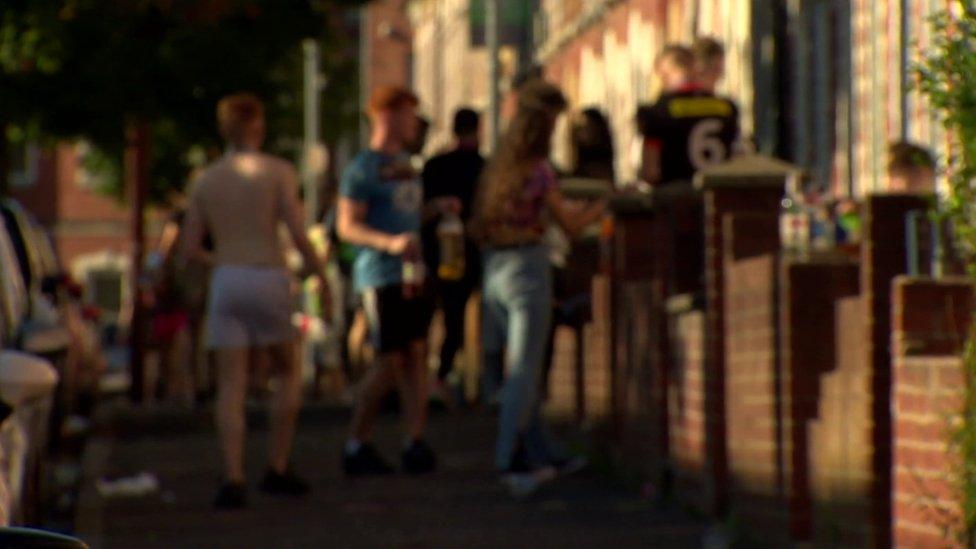
There were more than 30 people present at just one of the recent parties in the Holyland
A spokesman for the Landlord Association of Northern Ireland said properties are required to be kept "to a very strict standard" and had to meet certain criteria, such as room size, freezer space and the number of toilets.
He added that any tenants who encounter issues should report them to Belfast City Council.

The Holyland area and HMO housing
The Holyland area has the highest proportion of houses in multiple occupation (HMO) in Belfast.
HMO housing is accommodation where three or more people, from more than two households, live and is often student friendly and affordable.
This is often cited as being at the crux of the issue for the Holyland area.
Depending on the size of the area, there is some debate about how dense the population of HMOs is.
A report published earlier this year found that 64% of the area is made up of HMOs, external.
A spokesman for Belfast City Council told BBC News NI this type of accommodation makes up 48% of the properties in the area, with their being 1,061 HMO properties and 197 HMO properties which are currently going through renewal, out of a total of 2,643 residential units.
Belfast City Council has a target of having no more than 30% of any one area made up of HMOs., external
Prof Paddy Gray, who co-authored the 2020 report into the area, said the discrepancy could come from how geographical areas were being defined - and a high concentration of HMO properties in select streets could be seen as a significant issue.
Local authorities are responsible for issuing HMO licences and due to the high proportion already in the Holyland area, it is unlikely any more would be issued.

Housing expert Prof Paddy Gray, who co-authored a wide-reaching survey into the area published earlier this year, external, said there were other factors that made the Holyland "a ticking timebomb".
He highlighted the Roma community in the area, which, while hard to calculate exact numbers, were estimated to number between 1,000 and 1,800.
"The big thing is that they have been there a long time, they have grown up in the area, and would feel very much like Belfast people.
"Their children would be teenagers now and as they grow a bit older, tensions could arise with the student population," he said.
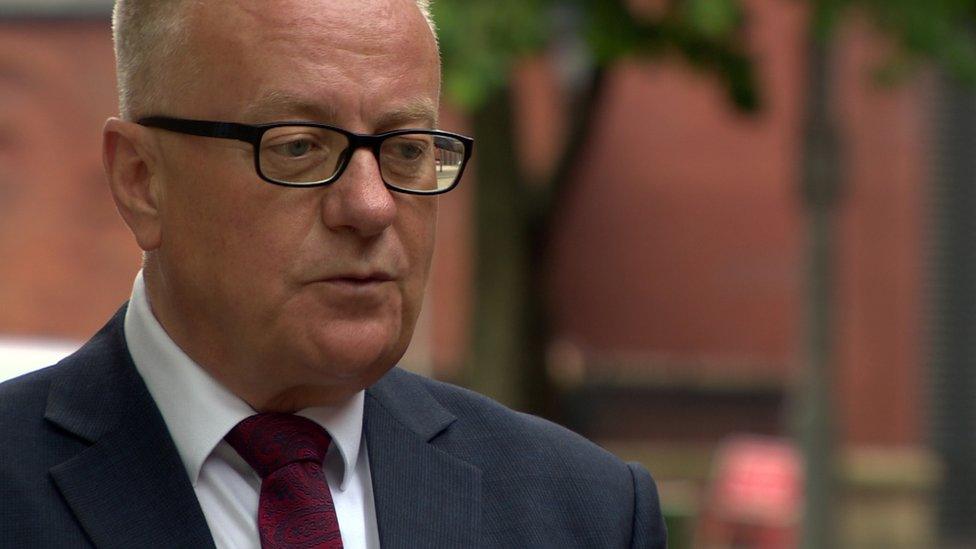
Prof Paddy Gray has authored an extensive report into the Holyland area
Prof Gray said his research found that a vast majority of students wished to live in private accommodation after leaving halls due to the lower cost.
They also had a positive impact for local businesses like cafes and taxi services.
He said the issues in the area were generally aggravated around St Patrick's Day, and the reputation of the Holyland most likely played a part - as evidenced by those travelling into the area for parties.
He pointed to areas around Ormeau Road and Stranmillis, where there was a high population of students but not the same social issues.
'Clear expectation'
Responding to a request for comment, Ulster University said it had a "clear expectation" of its student community to follow Covid-19 guidelines and it continued to work with the PSNI and Belfast City Council.
Queen's University said it continued to "consistently remind" new and returning students to abide by Covid-19 public health guidelines.
Belfast City Council said its Safer Neighbourhood and Alcohol Enforcement Officers worked in the area, and it had teams monitoring noise at night time between 20:00 and 04:00 seven days a week.
A PSNI spokesperson said it continued to "dedicate substantial resources to policing this area" and worked with partner organisations.
- Published22 September 2020
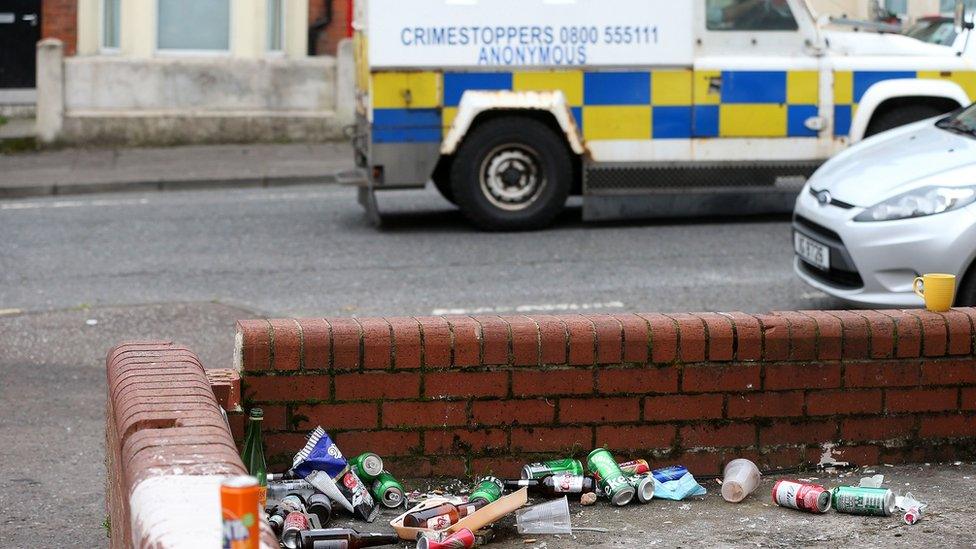
- Published18 September 2020
